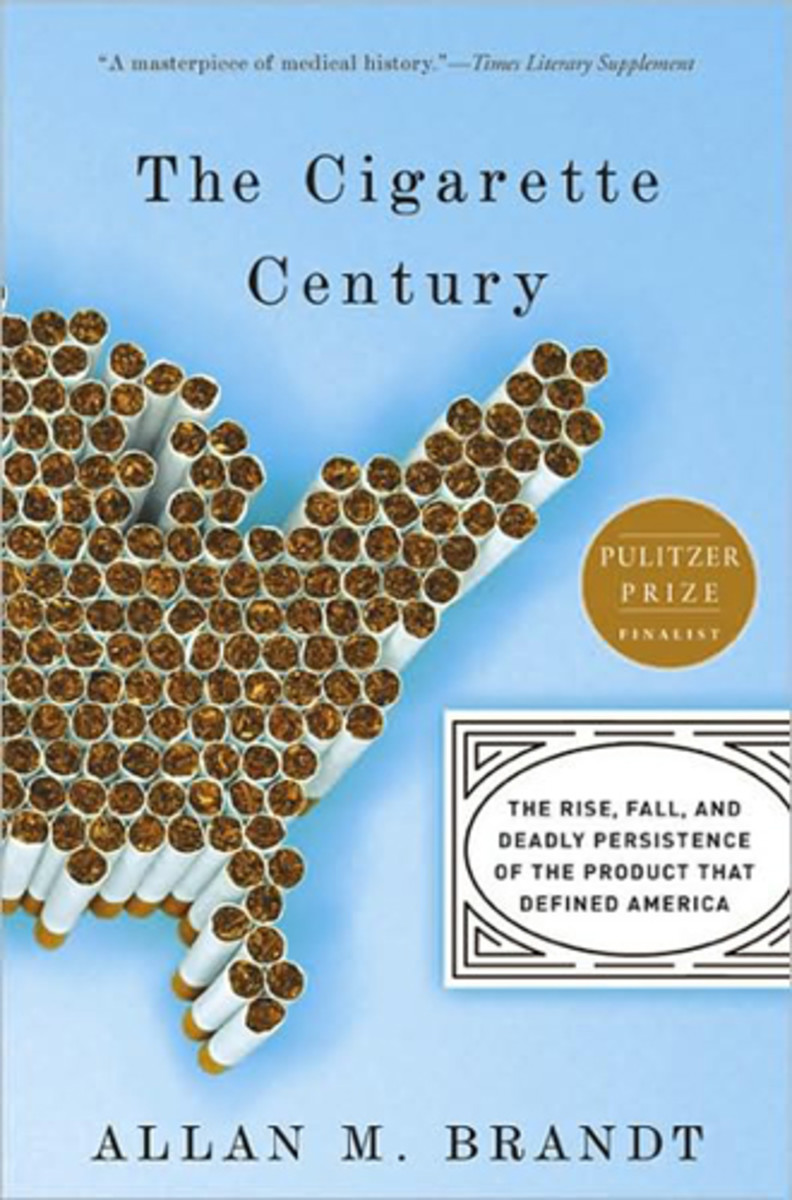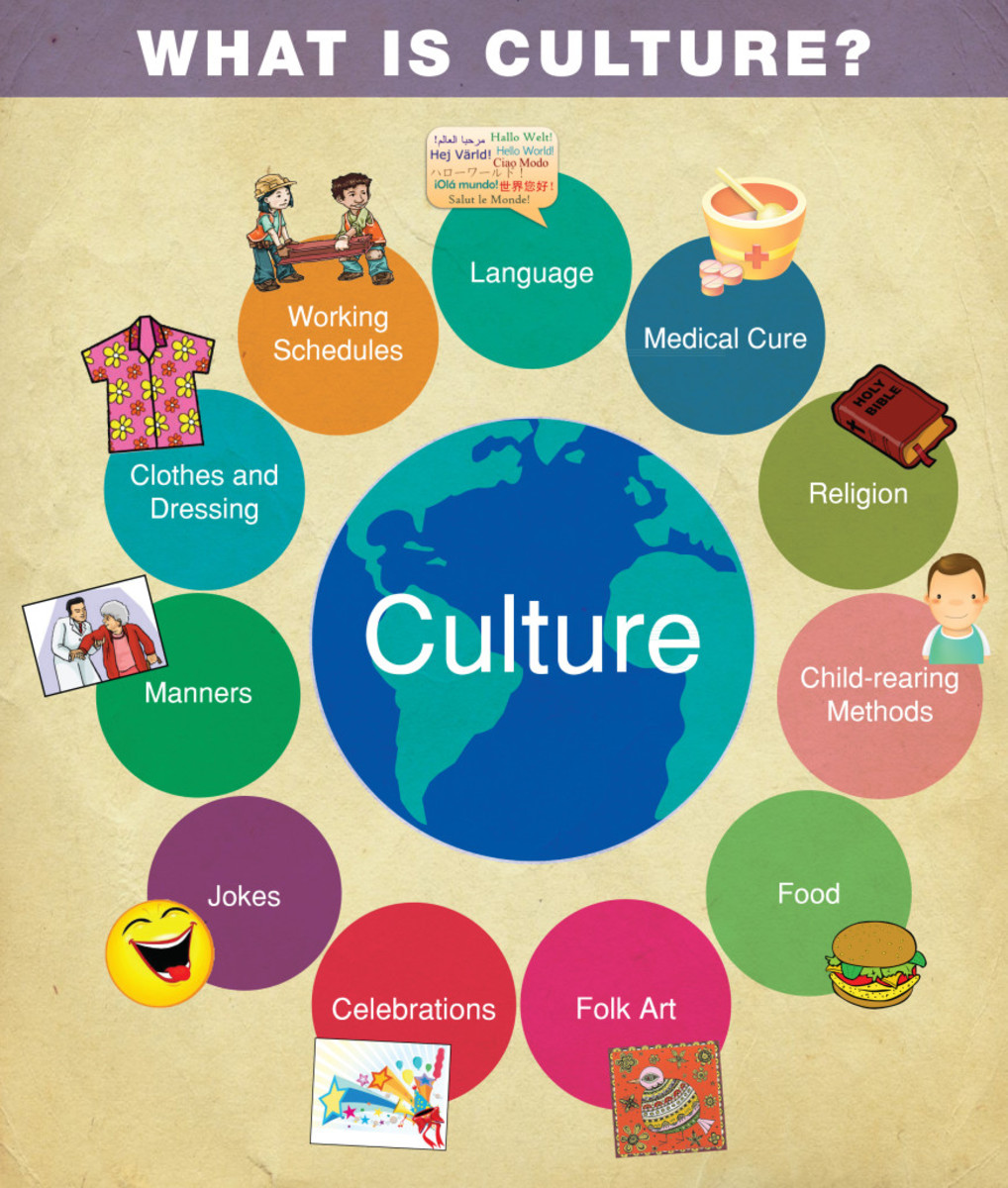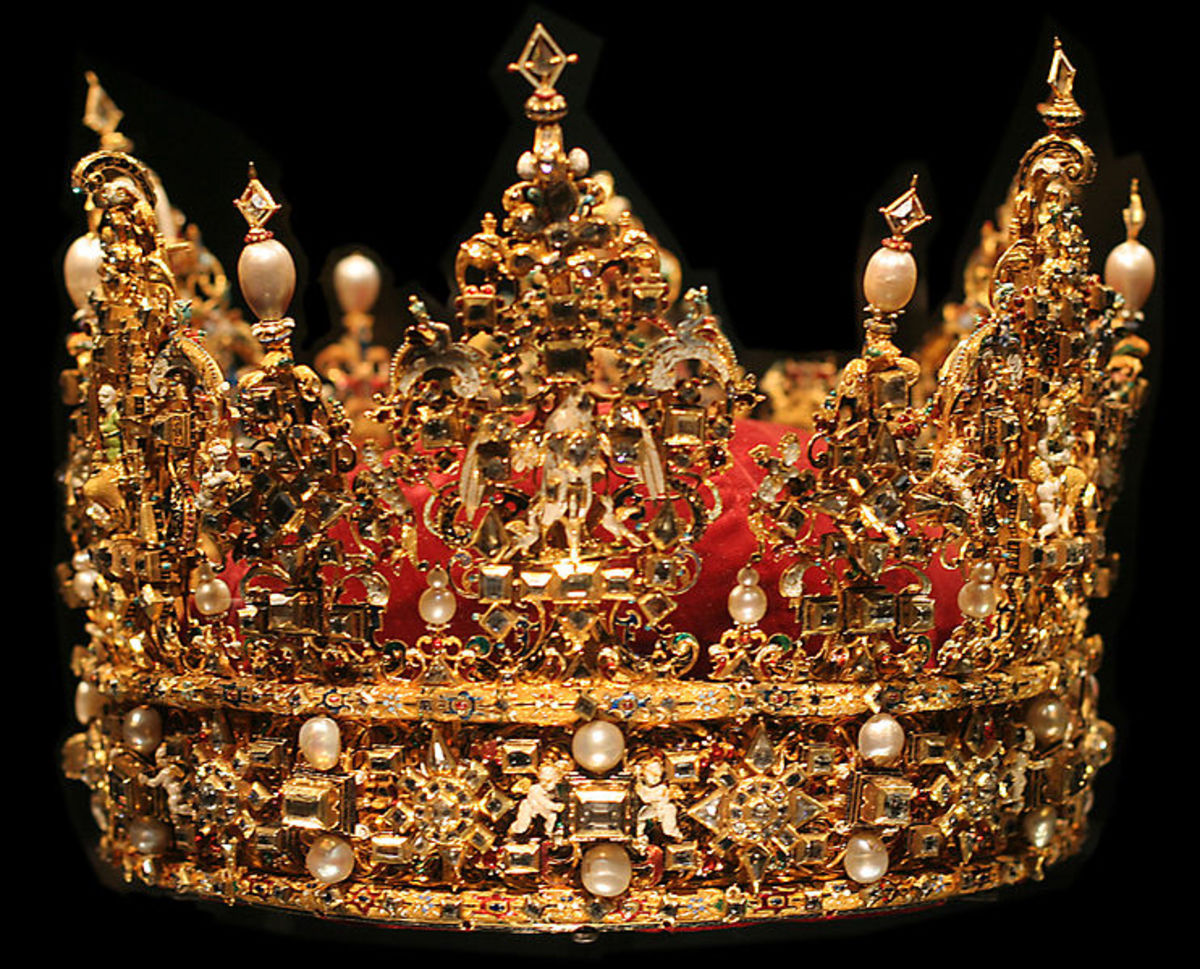Cultural Toxicity
Toxicity
In the United States, the very importance of women as consumers has made the the prime objective of advertising in the 20th and 21st centurys'. The way that women have been depicted in the media has reflected their changing roles in business, politics, and society. There has been a slight change or progress if you will, but in my view it has not been enough. Sex sells everything in our western culture. Women must be only partially clothed. All magazine covers look much the same from month-to-month. There is little positive feedback for the ordinary woman, those who are not flawlessly formed according to society's standards. Society's standards have been formed by our current male culture.
What our Daughters See
What our young girls are seeing around themselves in television, magazines, movies, and newspapers is an abundance of mixed messages. The models are super thin and in humanely beautiful. Yet we expect our young girls to separate reality from the fantasy of such perfection. We as a society are asking our daughters' to be sexy not sexual, be honest but please don't hurt anyone's feelings, be independent, but remember to be nice. We ask them to be smart. But they must make certain that they don't threaten the males. How do we expect them to be capable of making these distinctions? The role of women in society today have been made very unclear by the advertising media.
If We are Part of the Problem, We Will Never be a Part of the Solution.
Kurtz pointed out in her article in USA Today magazine that Mrs. Consumer has made 85% of the household purchases. In addition, to this very influential role, we as women have functioned as cultural icons, in the Art world and in the world of Politics and Advertising as well. We have also personified the concepts from peace to home to glamour.
Upper Class Women of the Early 1900s
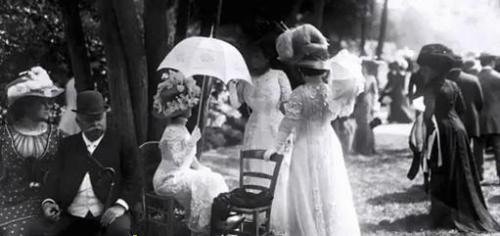
Early 1920s Women and Fashion
In the Post-Industrial Revolution era, great quantities were not a product of the hands, but of the purse. Upper-Class women were the beneficiaries of male directed mass production. As we entered the 20th century we learned how to buy rather than make. The professionals of the advertising industry began to create a stereotype of beauty for their allure. The voluptuous, spiritual woman became a giggling girl or a dedicated mother.
The 1920s brought to the middle class jazz, Paris fashions and household conveniences. It began a titillating social mingling of the sexes. Rather than to describe the qualities of a shirt, they would paint glamour. Advertisers were focusing more on the consumer and much less on the product. In this process they discovered the basic truth; the consumer was a woman. Women apprehended added power and freedom by winning the right to vote. They determined that every third worker was a female and the number of women college graduates increased. With the celebration of the 1920s female form came the first war on fat. The flappers of the era deliberately countered dowdy garments and a militant attitude.
The 1930s
With the 1930s came the Great Depression, which set off a carnival culture, the general public began to crave diversion. Curvaceous celebrities presented women with glamour. Advertisers were trying desperately to give energy to the depressed market with emotional appeals such as human tragedy, and sexual innuendos. Magazines were selling everything from chewing gum to toiletries. The appeal was for story telling and eavesdropping.
The 1940s
The 1940s rolled around and the wartime propaganda began to encourage women to labor for their country and family rather than for money, status, or security. Advertisers were beginning to urge the female factory workers to keep up the glamour look and the home life even while they were working the production lines. When Johnny came marching home, they were fired by the thousands and sent back home to keep the home fires burning. Advertisers were using the images of women to embody the home-front weakness and remind all America exactly what we were fighting for.
Upper Class Women of the 1940s

The Women of the 1950s
In the 1950s advertising took the home as a stage with the housewife playing a starring role. Advertisers began to enact conflict, dramas of romance and family life. Women become the public performers of very private ceremonies all based around middle class merchandise. The commercial world where we produced our goods and the home we consumed them from being graphically and culturally apart. America's nuclear family was a refuge against the threat of the Cold War. Television began to deliver a huge new audience to advertisers. The woman had become the domestic icon who would sanitize her home not only of filth but also of the inappropriate. Women began to manage desire, biology, and social relations to avoid disrupting the conformity of the middle class. The women that advertisers created to sell their wares became artificial beings with overstated, off balance and tentative poses.
Woman of the 1950s
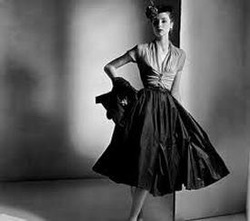
The 1960s the Decade of Change
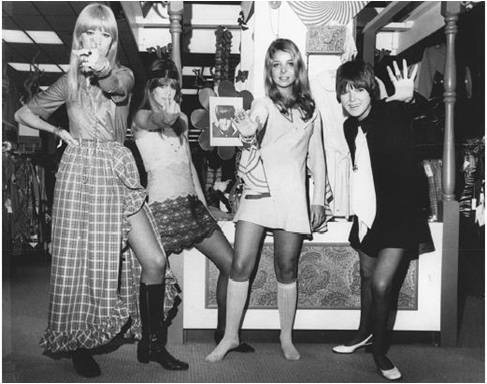
The 1960s Woman
In the 1960s lures of sex, youth, and liberation began to strengthen the magic of consumerism. Females began to have a fresh look with wider categories of beauty to choose from, ranging from the waif look to the voluptuous Marilyn Monroe look. The stewardess was the totem woman of the times. She combined the sex kitten's wardrobe, a chef's flair, and a mother's nurturing along with a working woman's independence. Advertising's constant was to be sexy, stay sexy, and get sexier. Housewives began to become obsessed with youth, sex, and power.
The 1970s
In the 1970s continued to examine popular culture to find the selling power. Ironically, women's liberation, celebration of ethnic heritage and the draw of the natural look were all adopted by advertising to encourage arguments for consumption. True indiviiduality was a sign of the times. Marketers began to realize that there were women of color. Women were rarely in the work place. The advertised life of the 1970s was almost entirely a life of play. In the career setting women depicted as either very dowdy or drop dead gorgeous. Advertisers were presenting a schizophrenic view of what it meant to be a real woman. Advertising's professional women exuded an aura of spinsterhood.
Professional Women of the 1970s
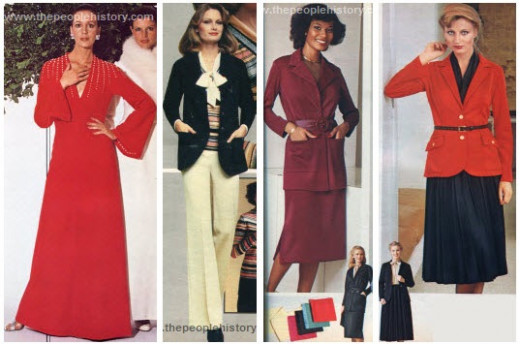
The 1980s and 1990s
In the 1980s and 1990s traditional selling formulas were exhausted and the public was more prone to be discontented. The success of Revlon's Charlie campaign in 1987 challenged many advertisers to incorporate feminist sensibilities into their work. Attempts to combine progressive slogans with the beach babe image has struck the wrong note with women of today. The scale of beauty and success widened in the 1980s and 1990s to include more variables such as age, ethnicity, and accomplishment. However, advertising's current model of beauty continues to remain young, white, and emaciated.
Today's advertisers are more sophisticated in their implementation, but the primary message to and about women has remained essentially unchanged. To tap into our power, offer us a new shade of lipstick, a fresh scented floor wax or wonder bras or even Nike women's sports gear. The difference is that today, both entertainment and news media outlets are up for grabs by the hawkers of hairspray, makeup, and sports utility vehicles.
Professional Woman of 1980-1990

"What Women Want"
In the film "What Women Want" starring Mel Gibson and Helen Hunt they both have to produced a Nike commercial in which a woman runs in swooshed-up sportswear while a voice over assures her that the road doesn't care if she is wearing make-up. She doesn't have to feel uncomfortable if she makes more money than the road. Basically we are equating freedom and liberation with a pair of $200 running shoes. I believe the commercial in the film is saying that women who are unhappy with the quality of their relationships can ease their frusteration by literally forming a more satisfying relationship with the road. There is no hint that her human relationships will improve, but the road will love her anyway.
Advertising is Changing
Advertising seems to be moving away from anything that would help us to find real changes in our lives. The real solutions, which are to quit waxing our bodies, to challenge unnatural beauty standards, or to demand that men grow up, are never an option. Instead, the message is that we must continue with all of these painful rituals, but at least we can escape for awhile by lacing up our Nikes and goimg out for a run. I can not help but wonder if there was ever such a thing as static cling before there were fabric softness and sprays?
More recently, advertisers discovered what they refer to as Relationship Marketing, creating ads that exploit a human need for connection and relationships, which in our culture is frequently seen as a woman's need. Advertising and the larger culture will often give rise to that women are failures if we do not have perfect relationships. Of course perfect relationships do not exist in real life.
Advertising is Among the Most Important Media
Advertising now is among the most important media of the advanced world. It is the public consciousness of the new society. The prime purpose is to grab attention; it is simply the techniques that have changed significantly. They do so in two ways first by enlisting pornography and secondly by enlisting social conscience. Billboards have become digital meaning each billboard will display more than one advertisement. Billboards are famous for carrying a number of campaigns depicting women naked or barely clothed.
I personally observed an ad recently that displayed a woman on her bed with her head flung back as if she were in ecstasy, with the line "Put him on his knees." My mother-in-law spoke to me of an ad she saw on the back of a London bus last year, this ad featured a woman with her legs wide open, looking expectantly towards the viewer in the car behind the bus. She was appalled at the way women are being presented in the media today.
The media today is guilty of shortening our attention spans and has made us intolerant of anything that does not produce quick results. The whole American ethic used to be and emphasis on work and working hard. The emphasis was delaying gratification and expecting a transformation through hard work. Now the whole idea is that everything should be instantaneous and if it is not that you should move on whether it is your marriage or anything else in life. We have come to expect everything to be effortless. Basically we have not got a model to get us through the rough times. Advertising creates dissatisfaction. One of the most insidious things about it is not just that it makes us dissatisfied with our marriage, our house, or our neighborhood, but particularly with our relationships. Everyone else seems to be having a better time so we always have to move on.
I believe that in general advertising harms us all. We as women have to fight the addictive power of advertising. The idea of an instant transformation ties it with instant gratification as something you may buy. Products that instantly make you feel better, instantly end your boredom. Whatever the product is it will certainly do the trick, it can make you beautiful, make you think and last but not least can save your marriage. My view is that we hand out this message and no wonder our children will turn to drugs. They are constantly told there is something to make you feel better. I truly believe that advertising contributes to pessimism among our youth. Our culture is extremely materialistic and our young girls are hyper-sexualized into our culture. Even pre-teens are being targeted through Internet web sites, magazines, and television. The clothing is unbelievable; some children are wearing hooker-in-training outfits.
What Should We Do?
As mentioned in an article in Insight on the news, 86% of all teenagers who smoke cigarettes smoke one of three brands; Marlboro, Camel, or Newports. These are the three brands, most advertised brands. Why are children important to advertisers? Children of today not only have an income, but the whine factor. They can get what they want from their parents'. In an article by Joanna Parsons the questioned was asked "What would it be like to walk down the streets of Los Angeles without viewing the Marlboro Man and Absolute Vodka advertisements? T'he article spoke of environmental prevention for our children. There was also a proposal by Pueblo y Salude Inc. a local nonprofit group to remove and ban these advertisements. They believe that this plan would drastically reduce minor's access to alcohol and cigarettes advertisements.
Images We View
The images we view every day are very influential on our population. The effects on our youth can be extremely devastating. The fashion industry has presented us with the waif image, this is an industry which demands youth and thinness. This image is often called 'Heroin Chic' in haute couture. These are the gaunt, pallid models you see staring sullenly out from out from the pages of Vogue and Elle for most of the 1990s and to present day. Men are in control the fashion industry. So they promote a look of women who could not possibly bear children. This seems to be part of an anti-life, anti-normal view, which is very predominate in this industry. This is the waif image.
The other image is the "Babe." This image is created by pornographers. This is the earth mother type where all that counts are the parts of the female anatomy that have do with birth, procreation, and nursing. The "Babe" image, with the breast enhancements, represents a fantasy of a woman who, because she is all woman. Even this image is impossible. It is totally absurd. Women are just not shaped like that.
The image we present can be the cause of many problems in today's world one of them being sexual harassment. On television programs that seemingly present very positive images are found to depict subtle and overt sexual harassment against women. What messages do these programs send to the general public? women must endure sexual harassment, that they should be not only able to handle it but also dish it out. They even try to portray that this is just a part of normal heterosexual interaction. Let it be known that the desensitized viewer or the uncritical viewer may not see harassment as abnormal or wrong.
The manner in which sexual harassment is portrayed on television implies that such actions are not serious, that the victims are seriously affected by the harassment, and that harassment can be prevented if victims would simply just resist. To put it simply, although television shows sexual harassment occurring with regularity, as in real life. They do so in a manner that trivializes sexual harassment. The Journal of Broadcasting noted that controversial issues are obscured in most cases by trivial discussion or jokes.
Most Beautiful Girl in the World 9 Years Old
Current Day
In today's world we are faced with the blatancy of women being viewed as nothing more than sex objects for men by the media. We must be submissive, nice, and very well behaved. The messages that we send our young girls that they should be thin, pretty, and their main goal is to attract men. Most women scorn their true bodies and work diligently for false bodies. We allow culture to define who we should be. We will go to any limit in order to gain acceptance or feel beautiful. This has been instilled in us by what we see and hear from the media. We put the beautiful people on pedestals for us to compare ourself to, to set ideals upon and to worship. The phrase "happy and fat" is an absolute oxymoron. Basically, men can not be trusted but Haagen-Dazs never disappoints. Love is fleeting. However, a diamond is forever.
Herion Chic






